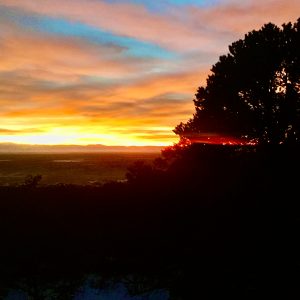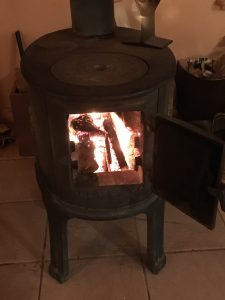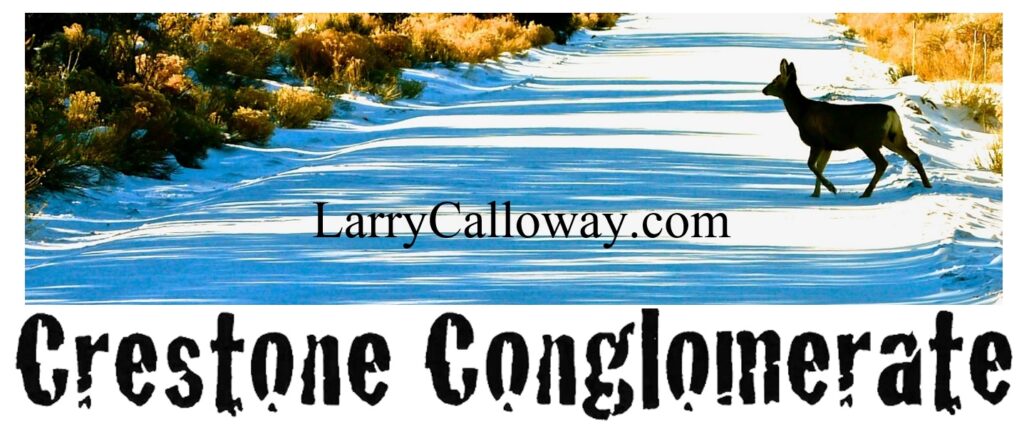
WOOD-FIRED open-air cremation is the way to go in Crestone, Colorado. I distinctly remember four of these lawful funerals held in a circular sanctuary on a hill on the sandy side of the San Luis Valley, below the highest of the Sangre de Cristo mountains. It always begins in the stillness before dawn.
Two of the dead were wives of my friends, another had been a generous potter everyone knew and the last was an officious community leader.
The husband and three sons of the first woman wore kilts and moved her frail bundle to the pyre with Scot dignity. The second woman’s aged husband spoke with love into a microphone plugged into an old boom box as the flames embraced her plain pine litter. One of the potter’s eulogizers said as the fire roared against the midwinter cold, “Now she’s warmer than any of us.” And the friends of the leader reminisced around the fading coals about how he once stopped a loud newcomer at a meeting, saying, “Who the fuck are you?”
By tradition close friends and family are the last to walk up the hill to the beautifully fenced sanctuary. The body they carry is invisible, completely wrapped with soft combustible cloth. The mourners, often a hundred or more, lay evergreen sprigs on the pyre. Four members of the family or close friends ignite the skillfully laid cord of firewood with pine torches, while members ot the volunteer fire department look on. At first the smoke billowed light grey in the ceremonies I especially recall. No wind disturbed the arid valley. Then, suddenly, a black streak joined the grey plume as the flames soared.
The first time I saw this dark arising I was shocked to realize its meaning. I dealt with the chilling perception by “whistling past the grave yard,” as they say. I whispered a line from Robert Service’s campfire doggrel, The Cremation of Sam McGee: “The greasy smoke in an inky cloak went streaking down the sky.”
But when I understood the phenomenon better at subsequent funerals I thought of the Indian god of fire. He is Agni (pronounced ugh-KNEE), celebrated and invoked in the ancient Indian Rig Veda. He (if he is a he) is like no other god I have ever heard of because he impersonates a fundamental power of nature. Namely, heat, in many forms: the hearth at the center of every household, the flames of the sacrificial altar and the funeral pyre, the warmth of living things “that breathe and blink,” and above all the sun “who shines upon darkness.”
Scientific thinkers sometimes say that mathematics is the language of nature. The brahmin caste comprising the poets and priests of India beginning three or four millennia ago are not famed for their early mathematics. But nature has a second language, and they spoke it. Or, rather, they sang it — the Rig Veda was originally only passed on verbally.
William Mahony, a Sanskrit scholar, writes in his book The Artful Universe: “Having been born in the heavens and moved through the skies, the god of fire is said to live with the human community on earth, where he blazes in the domestic hearth and on the sacrificial altar.”
 Agni is the Indian god closest to humanity, the one that the priests venerate when they light the sacred flame at the sacrificial altar. “Agni then rises upward and, carried by the pillar of rising smoke, ascends back into his original home in the heavens,” Mahony says. As “bright flames that love the gods have mounted upward,” one Rig Veda poem puts it, “he carries the sacrifice.” So Agni’s frequent epithet is “the knower of creatures.“
Agni is the Indian god closest to humanity, the one that the priests venerate when they light the sacred flame at the sacrificial altar. “Agni then rises upward and, carried by the pillar of rising smoke, ascends back into his original home in the heavens,” Mahony says. As “bright flames that love the gods have mounted upward,” one Rig Veda poem puts it, “he carries the sacrifice.” So Agni’s frequent epithet is “the knower of creatures.“
To Westerners all this is not a pleasant image. (They sometimes sacrificed horses.) And, of course, it applies equally to cremations. The burning grounds in India and Nepal are crowded and messy. They are beside rivers that carry away the corporeal ashes. (The Ganges is polluted.)
But imagine what is hidden from view in industrial cremation in the West. “The furnaces are few and the dead are many. Meanwhile each waits their turn, with the utmost patience in the chilled antechamber,’” writes Damon Galgut in his funereal novel The Promise. He depicts a professional cremator as a man with buck teeth and an ill-fitting wig “who will have been tending his ovens like a little demonic functionary for 34 years next July.”
In Crestone, everybody knows about the cremations, and many revere them. At the post office one morning I met a friend who was recovering from a nearly fatal heart attack. I said, “I’m glad you’re here.” He finished my thought, continuing, “Instead of going up in black smoke.”
In Crestone the ceremonies culminate at sunrise. By then the inky streak has fully ascended and the wood smoke has withdrawn. When the red hot ashes cool the particles of the loved one can be recovered. The sad or funny encomiums have played out and the gathering trickles down hill from the fenced circle. The sun brightens 14,000-foot summits to the east.
Scattering evil with light,
Shine on us, Agni, powerfully,
Scattering evil with light.
—Rig Veda 1.97.1, P Lai tr.

Larry
This is a lovely written piece. Your description leaves me me with a sense of powerful love and eternity. Makes me wish we could have created my mom here in Crestone. She flies above the living now.🙏🙏❤
Thanks for this, Larry. I read it yesterday afternoon after volunteering early in the morning with a cremation, for Neil Seitz, co-founder of Valley Valley View Hot Springs and Orient Land Trust. With your mention of Agni the god of fire I’m reminded of how relatively impoverished this culture is on those levels of ancient stories and metaphor, with their lessons on how elements like fire contain both destructive and creative power. But then, standing in a circle around the pyre as the body is consumed in flames, we don’t need any words or stories to really feel that transformative power. And when I walk to the head of the pyre structure when it’s almost burned down, every time it’s an almost shocking but very important visceral realization that there is no body, nobody, left.
With Neil’s cremation and the stories his family and friends were telling, I was also very aware of the element of water from the earth, and how at Valley View it has allowed for the creation of such a place of community and connection, as well as healing and reflection. And several people at Neil’s cremation talked about how with both Valley View and the Crestone End of Life Project, an initial vision has become such a beautiful gift to so many people. I feel really honored to be part of CEOLP and so blessed to live here.
Your World view expands the dailyness of life👍
Like those summits brightening.